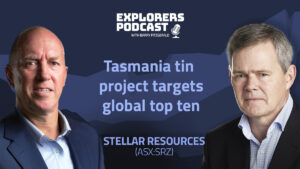Pesky termites are proving useful in finding nickel and cobalt

Pic: Schroptschop / E+ via Getty Images
First it was trees pointing the way to gold, now Australia’s national science agency CSIRO is investigating the potential for termite mounds to help explore for nickel and cobalt.
So just how do termite mounds become the signpost to mineral deposits that are key to a low emissions future?
While termite mounds are already being used for mineral exploration after earlier CSIRO research found that termites bring up small particles from ore deposits and store them in their mound, it is new advances in sample analysis that open up its use for nickel and cobalt.
The CSIRO noted it had put these advances to the test in Western Australia’s southern Pilbara region to demonstrate that manganese crusts – also known as metallic blue crusts – display unique zinc signatures that indicate the presence of other base metals in the area.
Manganese crusts are also found in rock and cave varnishes, making them an easily accessible exploration tool for metals including nickel and cobalt.
“Australian explorers need new, cost-effective techniques to find the next generation of deposits below the surface,” lead scientist Dr Sam Spinks said.
“As the world transitions to a low emission future, there’s a need for more nickel and cobalt to build electric vehicles and batteries to store renewable energy.
“We’ve shown that analysing zinc isotopes found in manganese crusts have huge potential to be used to explore for these metal deposits, and others.”
To prove the connection between termite mounds and finding mineralisation, the CSIRO analysed mounds and soils close to a zinc-lead-silver deposit and compared this data to samples from elsewhere.
“Zinc is commonly found in most base metal deposits, and over time, it’s released and ends up in a range of natural materials such as soils, termite mounds and vegetation,” Dr Spinks said.
While the alteration of zinc as it moves from the deposit to the surface traditionally made it unreliable as an exploration tool, the new advances in data analysis mean that zinc variations can now be measured accurately enough to identify what metal deposit is located underground.
“Australian exploration companies have been analysing samples from termite mounds in gold exploration in recent years, now zinc offers another technique for use in broader environments and to find a range of metals,” CSIRO research group leader Dr Yulia Uvarova said.
In Australia, mineral deposits tend to be located under cover, making drilling a requirement for effective exploration.
Being able to use termite mounds as an aid to exploration would cut back on the guesswork and potentially reduce the cost of exploring for nickel and cobalt deposits.
Related Topics
UNLOCK INSIGHTS
Discover the untold stories of emerging ASX stocks.
Daily news and expert analysis, it's free to subscribe.
By proceeding, you confirm you understand that we handle personal information in accordance with our Privacy Policy.








